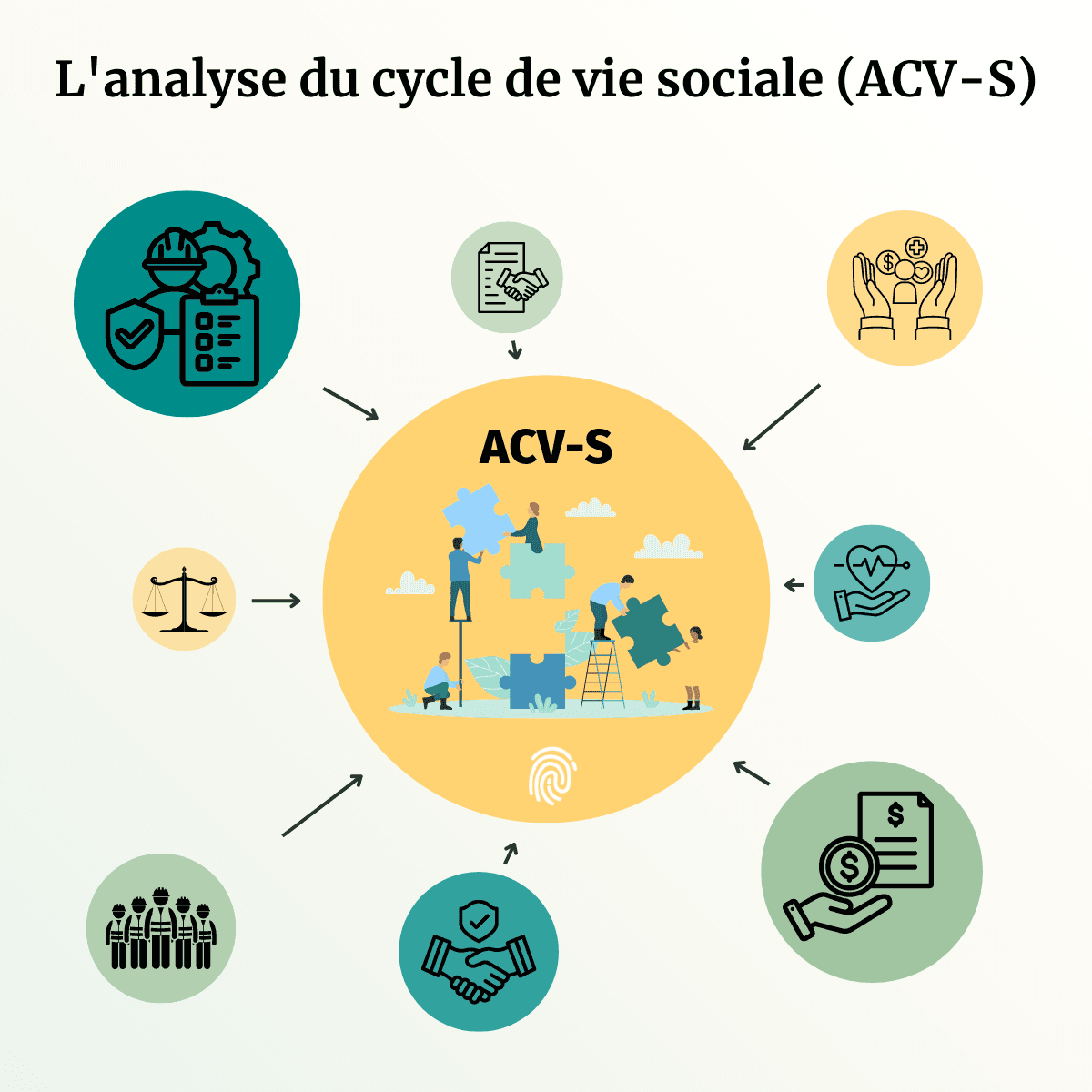Volcy Boilevin
L'analyse du cycle de vie sociale (ACV-S)
5 minutes
30 nov. 2021
Qu'est-ce que l'analyse du cycle de vie sociale (ACV-S) ?
L'ACV-S permet d'évaluer les impacts sociaux et socio-économiques, qu'ils soient positifs ou négatifs, des produits tout au long de leur cycle de vie. Elle examine également les impacts sociaux liés à tous les processus associés, qu'ils soient en amont ou en aval. L"ACV-S peut être appliquée pour calculer une empreinte sociale ou un impact social, identifier des points chauds sociaux, c'est-à-dire des lieux ou activités à risque ou à impact élevé, ou encore pour déterminer une empreinte sociale positive. Elle peut également servir à évaluer les impacts potentiels d'une politique ou d'un choix d'investissement.
Article en cours de rédaction.
Publications sur l'ACV sociale
Bouillass, G., Blanc, I., & Perez-Lopez, P. (2021). Step-by-step social life cycle assessment framework: a participatory approach for the identification and prioritization of impact subcategories applied to mobility scenarios. The International Journal of Life Cycle Assessment, 1-28.
Finnveden, G., Hauschild, M. Z., Ekvall, T., Guinée, J., Heijungs, R., Hellweg, S., Koehlere, A., Pennington, D., & Suh, S. (2009). Recent developments in life cycle assessment. Journal of environmental management, 91(1), 1-21.
FruiTrop Thema. (2018). Social LCA People and Places for Partnership: Pre-proceedings of the 6th Social Life Cycle Assessment.
Huertas-Valdivia, I., Ferrari, A. M., Settembre-Blundo, D., & García-Muiña, F. E. (2020). Social life-cycle assessment: A review by bibliometric analysis. Sustainability, 12(15), 6211.
Jørgensen, A., Le Bocq, A., Nazarkina, L., & Hauschild, M. (2008). Methodologies for social life cycle assessment. The international journal of life cycle assessment, 13(2), 96-103.
UNEP. (2020). Guidelines for Social Life Cycle Assessment of Products and Organizations 2020.

Sapiologie
Débloquez toute la puissance de l’ACV à l’échelle
d’une entreprise et de sa chaîne de valeur.
2024 Sapiologie. Tous droits réservés.
